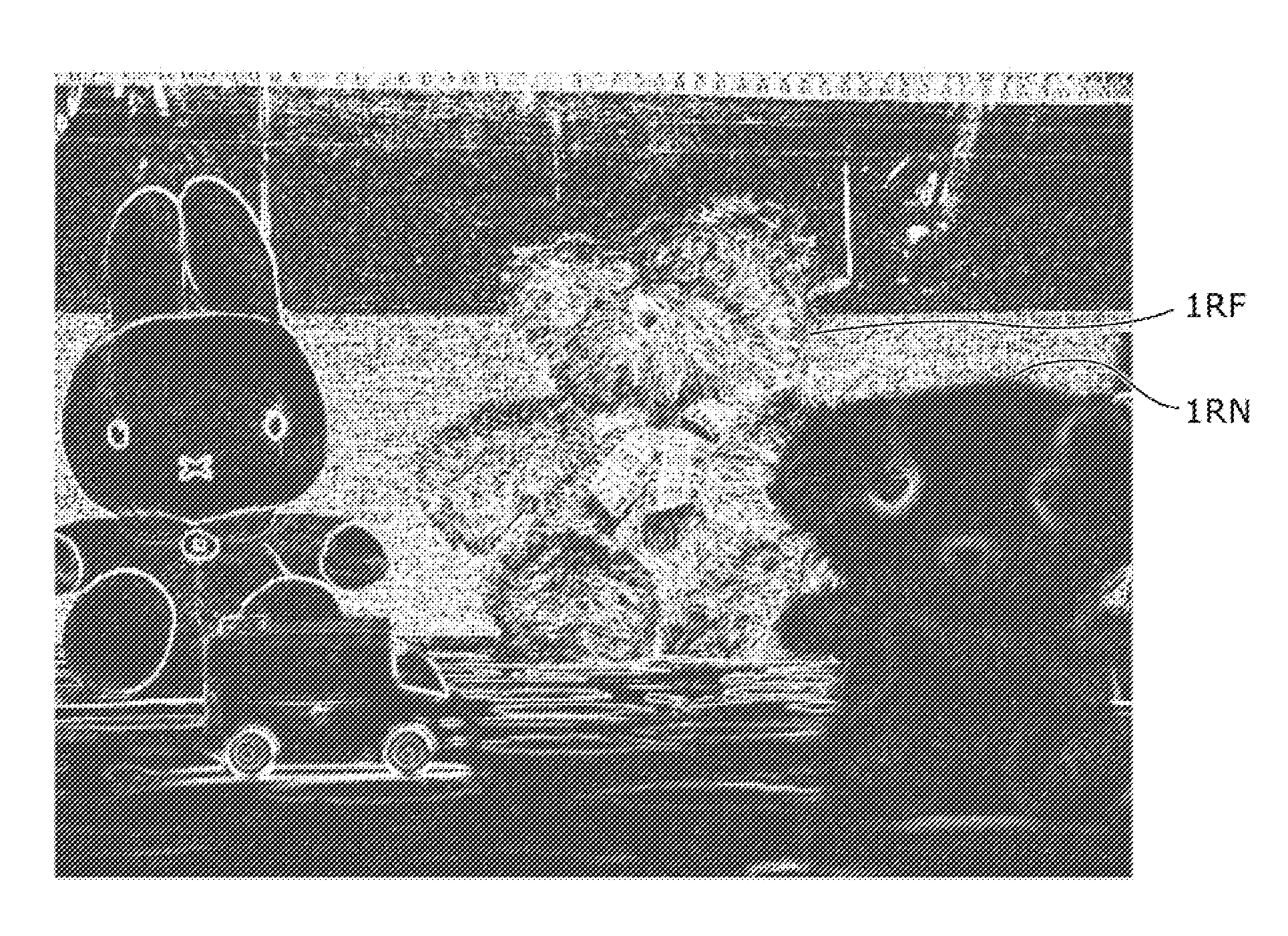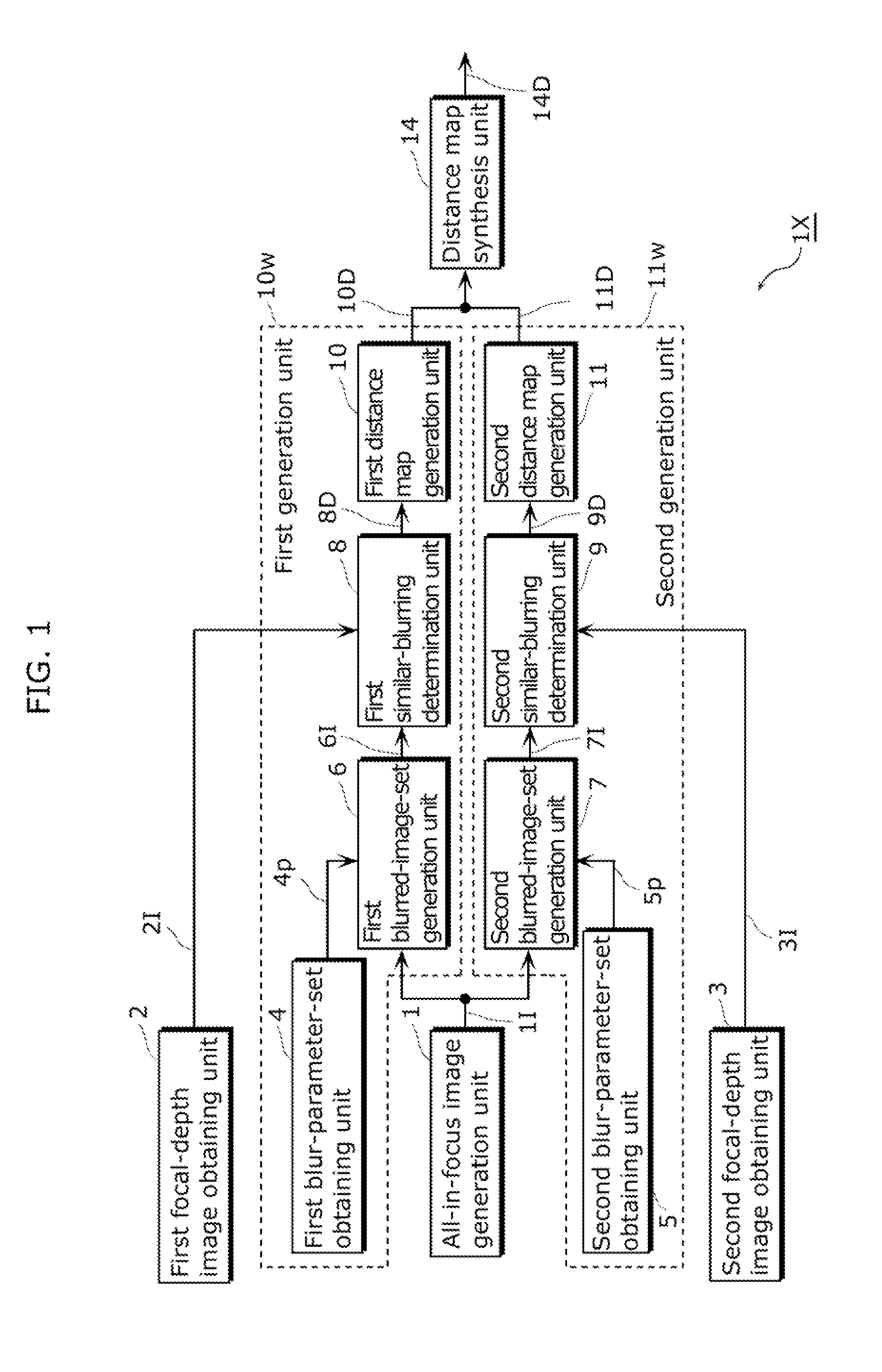Distance estimation device, distance estimation method, integrated circuit, and computer program
a technology of distance estimation and distance measurement, which is applied in the field of distance estimation devices, distance estimation methods, integrated circuits, and computer programs, can solve the problems of not being able to arrange the phase-difference detection sensors corresponding to all the pixels included in the image, the method is not suitable for distance measurement when the subject is present, and the accuracy of the determined distance is prevented. , the effect of preventing the variation of distance estimation accuracy
- Summary
- Abstract
- Description
- Claims
- Application Information
AI Technical Summary
Benefits of technology
Problems solved by technology
Method used
Image
Examples
embodiment 1
[0111]A distance estimation device and a distance estimation method in Embodiment 1 according to the present invention are described, with reference to FIG. 1, FIGS. 2A to 2C, and FIGS. 3A to 3C. It should be noted that since fundamental components are the same between the distance estimation device and the distance estimation method, only the distance estimation device is described as follows.
[0112]FIG. 1 is a block diagram showing a configuration of the distance estimation device (the distance estimation device 1x) in Embodiment 1.
[0113]The distance estimation device includes an all-in-focus image generation unit 1, a first focal-depth image obtaining unit 2, a first blur-parameter-set obtaining unit 4, a first blurred-image-set generation unit 6, a first similar-blurring determination unit 8, a first distance map generation unit 10, a second focal-depth image obtaining unit 3, a second blur-parameter-set obtaining unit 5, a second blurred-image-set generation unit 7, a second sim...
embodiment 2
[0147]A distance estimation device and a distance estimation method in Embodiment 2 according to the present invention are described, with reference to FIG. 4, FIGS. 5A to 5C, FIG. 6, and FIG. 7. It should be noted that since fundamental components are the same between the distance estimation device and the distance estimation method, only the distance estimation device is described as follows.
[0148]FIG. 4 shows the distance estimation device (a distance estimation device 1y) in Embodiment 2. This distance estimation device includes a first image characteristic extraction unit 12 and a second image characteristic extraction unit 13 in addition to the configuration of the distance estimation device shown in FIG. 1 in Embodiment 1. Moreover, the distance estimation device in Embodiment 2 includes a distance map synthesis unit 14B (FIG. 4) in place of the distance map synthesis unit 14 (FIG. 1).
[0149]Components assigned with number 1 to 11 are the same as those with these numbers in Em...
PUM
 Login to View More
Login to View More Abstract
Description
Claims
Application Information
 Login to View More
Login to View More - R&D
- Intellectual Property
- Life Sciences
- Materials
- Tech Scout
- Unparalleled Data Quality
- Higher Quality Content
- 60% Fewer Hallucinations
Browse by: Latest US Patents, China's latest patents, Technical Efficacy Thesaurus, Application Domain, Technology Topic, Popular Technical Reports.
© 2025 PatSnap. All rights reserved.Legal|Privacy policy|Modern Slavery Act Transparency Statement|Sitemap|About US| Contact US: help@patsnap.com



